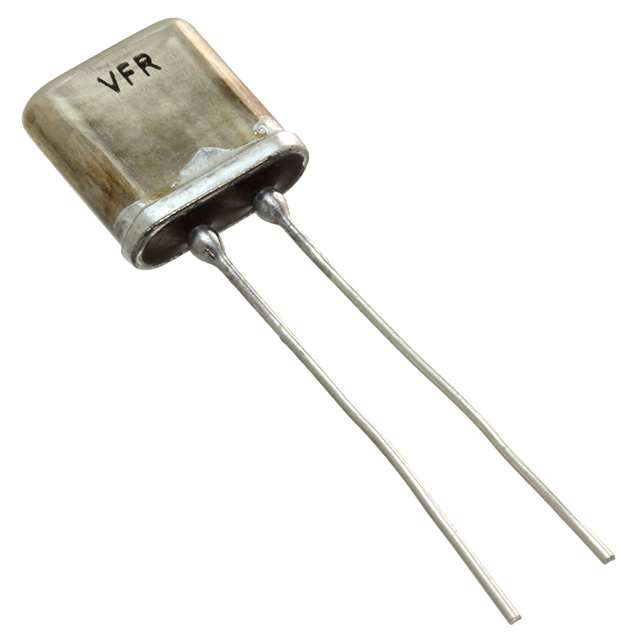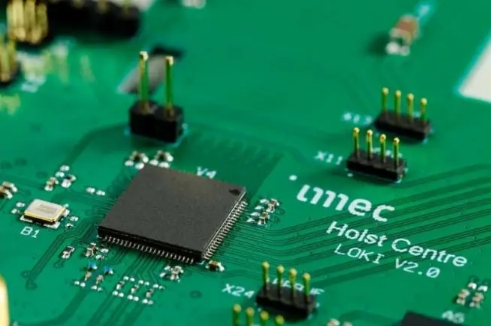What is the common production process of compensation capacitors?
What is the Common Production Process of Compensation Capacitors?
I. Introduction
A. Definition of Compensation Capacitors
Compensation capacitors are essential components in electrical systems, designed to improve power factor, stabilize voltage levels, and enhance the overall efficiency of electrical networks. They work by compensating for the reactive power generated by inductive loads, such as motors and transformers, thereby reducing energy losses and improving system performance.
B. Importance of Compensation Capacitors in Electrical Systems
In modern electrical systems, maintaining an optimal power factor is crucial for efficient energy consumption. Poor power factor can lead to increased energy costs, overheating of equipment, and reduced lifespan of electrical components. Compensation capacitors play a vital role in mitigating these issues, making them indispensable in various applications, including industrial plants, commercial buildings, and renewable energy systems.
C. Overview of the Production Process
The production of compensation capacitors involves a series of intricate steps, from material selection to final assembly. Understanding this process is essential for manufacturers and engineers alike, as it directly impacts the performance and reliability of the capacitors.
II. Types of Compensation Capacitors
A. Fixed Compensation Capacitors
Fixed compensation capacitors are designed to provide a constant capacitance value. They are commonly used in applications where the reactive power requirements are stable, such as in power factor correction systems.
B. Variable Compensation Capacitors
Variable compensation capacitors allow for adjustable capacitance values, making them suitable for applications with fluctuating reactive power demands. These capacitors are often used in tuning circuits and dynamic power factor correction systems.
C. Specialty Compensation Capacitors
Specialty compensation capacitors are tailored for specific applications, such as high-voltage environments or extreme temperature conditions. These capacitors are engineered to meet unique performance criteria, ensuring reliability in challenging operating conditions.
III. Raw Materials Used in Production
A. Dielectric Materials
1. Types of Dielectrics (Ceramic, Film, Electrolytic)
The dielectric material is a critical component of compensation capacitors, as it determines the capacitor's capacitance, voltage rating, and overall performance. Common dielectric materials include ceramic, film, and electrolytic substances, each with distinct properties and applications.
2. Properties and Selection Criteria
When selecting dielectric materials, manufacturers consider factors such as dielectric constant, temperature stability, and loss tangent. The right choice of dielectric material is essential for achieving optimal performance and reliability.
B. Conductive Materials
1. Types of Conductors (Aluminum, Copper)
Conductive materials, typically aluminum or copper, are used for the electrodes in compensation capacitors. The choice of conductor affects the capacitor's efficiency, conductivity, and overall performance.
2. Importance of Conductivity and Durability
High conductivity ensures minimal energy loss during operation, while durability is crucial for the capacitor's longevity. Manufacturers must carefully select conductive materials to balance these factors.
C. Encapsulation Materials
1. Types of Encapsulation (Plastic, Metal)
Encapsulation materials protect the capacitor from environmental factors and mechanical stress. Common encapsulation materials include plastics and metals, each offering different levels of protection and insulation.
2. Role in Protection and Insulation
The encapsulation serves to insulate the capacitor, preventing electrical leakage and protecting it from moisture, dust, and other contaminants. This is vital for maintaining the capacitor's performance and reliability over time.
IV. Production Process Overview
A. Design and Engineering
1. Specifications and Requirements
The production process begins with design and engineering, where specifications and requirements are established based on the intended application. This phase involves collaboration between engineers and designers to ensure that the final product meets performance standards.
2. Simulation and Prototyping
Before mass production, simulations and prototypes are created to test the design's feasibility. This step allows manufacturers to identify potential issues and make necessary adjustments before proceeding to full-scale production.
B. Material Preparation
1. Sourcing and Quality Control
Once the design is finalized, raw materials are sourced from suppliers. Quality control measures are implemented to ensure that all materials meet the required standards and specifications.
2. Pre-processing of Raw Materials
Raw materials undergo pre-processing, which may include cutting, shaping, and treating to prepare them for the fabrication stage. This step is crucial for ensuring that the materials are ready for assembly.
C. Component Fabrication
1. Dielectric Layer Formation
The dielectric layer is formed through various methods, such as coating or layering, depending on the type of dielectric material used. This layer is critical for the capacitor's performance and must be manufactured with precision.
2. Electrode Preparation
Electrodes are prepared by cutting and shaping the conductive materials. This step ensures that the electrodes fit properly within the capacitor and maintain optimal contact with the dielectric layer.
3. Assembly Techniques
The assembly of the capacitor involves carefully layering the dielectric and electrodes, followed by securing them in place. Various techniques, such as welding or adhesive bonding, may be employed to ensure a robust assembly.
D. Encapsulation and Protection
1. Methods of Encapsulation
Once assembled, the capacitor is encapsulated using methods such as injection molding or potting. This step provides the necessary protection against environmental factors and mechanical stress.
2. Importance of Environmental Protection
Effective encapsulation is vital for the longevity and reliability of compensation capacitors. It prevents moisture ingress, dust accumulation, and other contaminants that could compromise performance.
E. Testing and Quality Assurance
1. Electrical Testing (Capacitance, Voltage Rating)
After encapsulation, the capacitors undergo rigorous electrical testing to verify their capacitance, voltage rating, and overall performance. This step ensures that the capacitors meet industry standards and specifications.
2. Mechanical Testing (Durability, Thermal Stability)
Mechanical testing assesses the durability and thermal stability of the capacitors. This includes subjecting them to various stress conditions to ensure they can withstand real-world operating environments.
3. Compliance with Standards (IEC, UL)
Manufacturers must ensure that their products comply with relevant industry standards, such as those set by the International Electrotechnical Commission (IEC) and Underwriters Laboratories (UL). Compliance is crucial for market acceptance and safety.
V. Final Assembly and Packaging
A. Final Inspection
Before packaging, each capacitor undergoes a final inspection to ensure that it meets all quality and performance standards. This step is essential for maintaining the integrity of the product.
B. Packaging Techniques
Capacitors are packaged using techniques that protect them during transportation and storage. This may include anti-static materials and cushioning to prevent damage.
C. Labeling and Documentation
Proper labeling and documentation are crucial for traceability and compliance. Each package is labeled with essential information, including specifications, manufacturing date, and compliance certifications.
VI. Challenges in Production
A. Material Sourcing Issues
Manufacturers often face challenges in sourcing high-quality raw materials, particularly in a global market where supply chain disruptions can occur.
B. Technological Advancements
Keeping up with technological advancements is essential for manufacturers to remain competitive. This includes adopting new production techniques and materials that enhance performance.
C. Environmental Regulations
Compliance with environmental regulations can pose challenges for manufacturers, particularly in terms of waste management and emissions control.
D. Cost Management
Balancing production costs while maintaining quality is a constant challenge for manufacturers. Efficient production processes and material sourcing strategies are essential for managing costs effectively.
VII. Future Trends in Compensation Capacitor Production
A. Innovations in Materials
The future of compensation capacitor production will likely see innovations in materials, including the development of advanced dielectrics and conductive materials that enhance performance and reduce costs.
B. Automation and Smart Manufacturing
Automation and smart manufacturing technologies are expected to play a significant role in the production process, improving efficiency and reducing human error.
C. Sustainability Practices
As environmental concerns grow, manufacturers are increasingly adopting sustainability practices, such as using eco-friendly materials and reducing waste in the production process.
VIII. Conclusion
A. Recap of the Production Process
The production process of compensation capacitors is a complex and multifaceted endeavor that involves careful planning, material selection, and rigorous testing. Each step is crucial for ensuring the final product meets the required performance standards.
B. Importance of Quality in Compensation Capacitors
Quality is paramount in the production of compensation capacitors, as it directly impacts their performance and reliability in electrical systems. Manufacturers must prioritize quality control at every stage of the production process.
C. Future Outlook for the Industry
As technology continues to evolve, the compensation capacitor industry is poised for growth and innovation. By embracing new materials, automation, and sustainability practices, manufacturers can enhance their products and meet the demands of an ever-changing market.
IX. References
A. Academic Journals
- IEEE Transactions on Power Electronics
- Journal of Electrical Engineering & Technology
B. Industry Reports
- Global Capacitor Market Report
- Power Factor Correction Capacitors Market Analysis
C. Standards and Guidelines
- IEC 61071: Capacitors for Power Electronics
- UL 810: Capacitors for Use in Electrical Equipment
---
This blog post provides a comprehensive overview of the common production process of compensation capacitors, highlighting the importance of each step and the challenges faced by manufacturers. By understanding this process, stakeholders can appreciate the complexity and significance of these essential electrical components.









